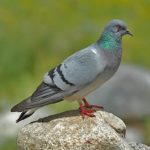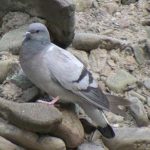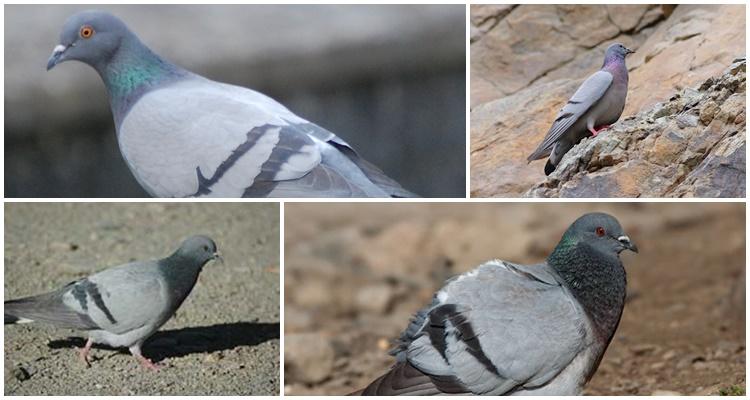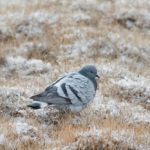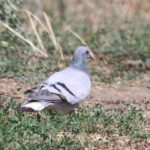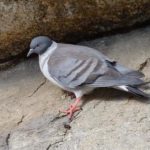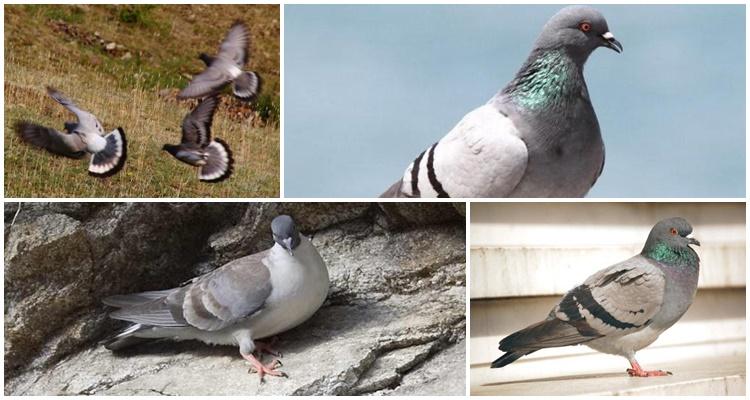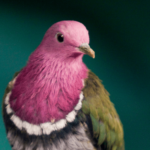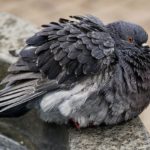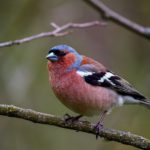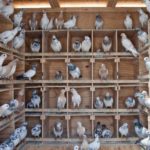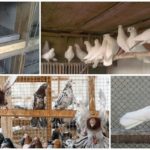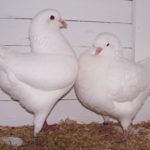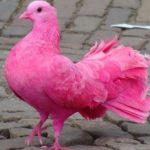Rock pigeons most often settle in rocks. They can often be found near bodies of water - large lakes, mountain streams or wide rivers. These birds are considered to be quite sedentary. Sometimes they migrate to the southern regions within their range. In appearance, this species of birds mainly resembles rock pigeons, but differs from them in its smaller size. Rock pigeons have a wide distribution range and are not endangered.
Origin of the species
Initially, the birds lived in the wild. They were found in the northern regions of Africa.Birds could also be seen in Europe and Asia. The domestication of pigeons occurred more than 5,000 years ago. However, rockbirds are still found in the wild.
Appearance and features
In appearance, the birds resemble rock pigeons. However, they are smaller in size and look much more elegant. The body length of males is 34-35 centimeters, and females - 33-34. The wings are 22-23.5 centimeters long. Moreover, their span reaches 65.5-67.5 centimeters.
The color of the upper body is light gray. Moreover, it is slightly darker on the neck and head. The upper part of the neck is distinguished by a green sheen, which is not so pronounced in the neck area. The wings have 2 transverse black stripes. They gradually narrow from the sides downwards. Females are slightly smaller and slimmer compared to males. They are characterized by a not so bright neck and goiter. In addition, they are considered more mobile.
Diet
Rock pigeons eat wild plant seeds. During snowy winters there is a shortage of food. That’s why birds descend from the mountains into the valleys and find seeds of cultivated plants there. They usually eat wheat, rye, barley, and oats. Among wild herbs, pigeons prefer the seeds of knotweed, dandelion, plantain, and chickweed.
Habitat
These wild pigeons are often found in different regions of Asia. They live in India, China, Kyrgyzstan, and Russia. These birds can also be seen in Mongolia, Pakistan, Afghanistan and other countries. The total number of birds is unknown. However, in its distribution areas this species is considered quite common.
Spreading
Birds have a fairly wide distribution.They settle from the mountains of eastern Central Asia to the coast of the Sea of Japan. Outside Northern Asia, birds live in China, Mongolia, and Afghanistan. They also live in the western Himalayas.
Wintering
There is no exact information regarding the migration of rock pigeons. At the same time, scientists have information that in some places birds move from high mountains to lower ones.
In the high mountainous regions of Central Asia, birds spend the winter in habitats. However, they prefer to stay close to settlements.
Daily activity, behavior and reproduction
During the day, rock pigeons are active only during the day. During the non-breeding period, these birds form very strong flocks. They can also form mixed flocks with rock pigeons. In this case, the birds manage to separate during the take-off stage.
In cities, rock and rock pigeons settle in different places. Gray birds prefer to rest during the day on roofs, lawns or asphalt. At the same time, rocky bird species do not like city noise. Therefore, they settle down to rest on the roofs of tall buildings that overlook quiet courtyards. There is little information regarding the reproduction of this species of birds. It is known that the mating season in birds begins quite early. So, in Primorye, pigeons lay eggs in February.
Birds build their nests in rock crevices. In settlements, birds can place them under roofs. The exact number of clutches is unknown. During the nesting period, birds form colonies of 2-4 pairs. Sometimes they are more numerous and include several dozen pairs.
Natural enemies
In deserted areas, the main enemies of this type of pigeon include crows and magpies. In low mountain areas, birds suffer from attacks by falcons and hawks.At the same time, due to their high speed and excellent maneuverability, rock pigeons are less likely than rock pigeons to be attacked by predators.
Pigeons that live on the cliffs of Baikal and Angara suffer from crows and magpies. They find and destroy bird nests. In these places, rock pigeons are often protected by numerous gulls, which drive away crows and other bird predators. At the same time, seagulls do not destroy pigeon nests.
Relatively few of these birds live in cities, so they are practically not persecuted by people. In addition, birds settle in hard-to-reach places. This almost completely eliminates the influence of people on their numbers.
At the same time, there are other unfavorable factors that negatively affect the number of birds. These include food shortages in high mountain regions. In severe winters with a lot of snow, birds have to descend to low mountain areas, located near human habitation.
Population and species status
In many areas of its range, this species of pigeon is considered common or even numerous. In nature, this species of birds lives in inaccessible places. Therefore, it is rarely attacked by people or predatory animals. With the arrival of autumn, flocks of 150-300 individuals form in the Irkutsk region and on Lake Baikal. In the Central Asian mountains there are flocks of several dozen birds.
At the same time, ecological plasticity and harsh habitat lead to the fact that rock pigeons are not able to catch up with rock pigeons in numbers. Flocks of more than 300 individuals are considered the limit for them.
Rock pigeons resemble rock pigeons in appearance. However, they are characterized by a number of features. These birds live in mountainous areas and have a wide distribution area.At the same time, they also have natural enemies. These include magpies, crows, and hawks.

